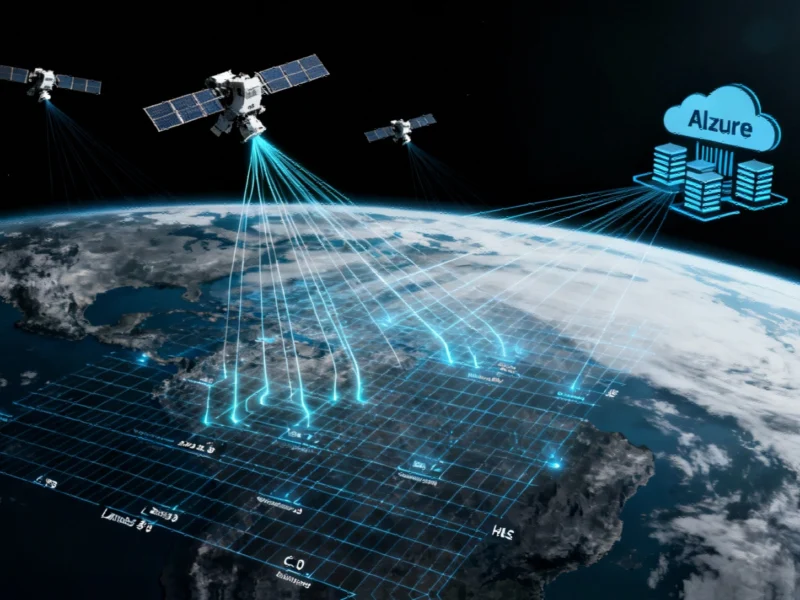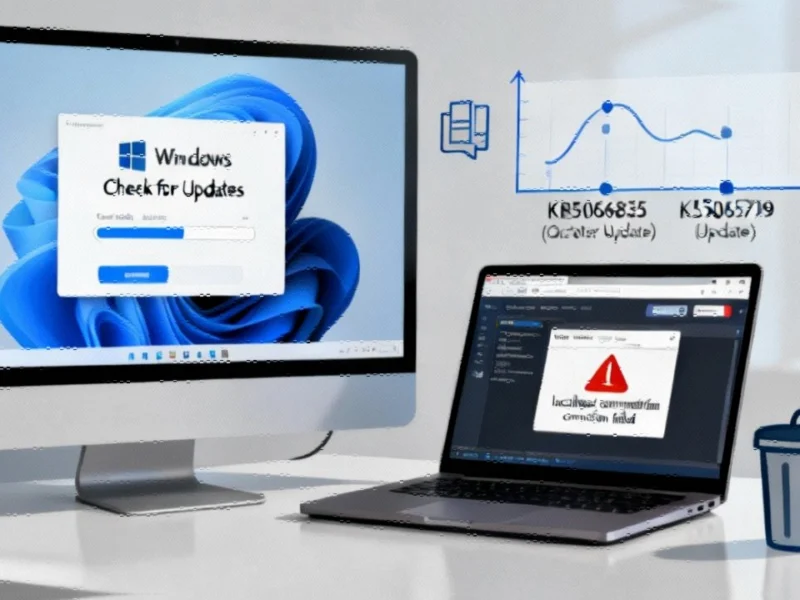NASA’s Earth Monitoring Archives Migrate to Azure
Microsoft has announced the availability of NASA’s Harmonized Landsat and Sentinel-2 (HLS) dataset on its Azure cloud platform, marking a significant advancement in how researchers access and analyze global environmental data. The dataset, accessible through Microsoft’s Planetary Computer platform, represents petabytes of Earth observation information that scientists can now leverage through APIs or direct Azure storage access.
“This flexible scientific environment allows users to answer questions about the data, and both build applications and use applications on top of the platform,” Microsoft stated in their announcement. The move comes at a time when tech supply chains undergo historic restructuring across multiple sectors, including cloud computing and space technology.
The HLS Dataset: A Treasure Trove of Earth Observation
The Harmonized Landsat Sentinel-2 dataset combines observations from NASA’s Landsat 8 and 9 satellites with the European Space Agency’s Sentinel-2 constellation. This integration creates a comprehensive Earth monitoring system that provides researchers with unprecedented capabilities for tracking environmental changes.
Landsat 8, launched in 2013, continues to provide valuable data despite its age, while Landsat 9 joined the constellation in 2021. The future Landsat Next mission remains dependent on NASA’s final budget decisions. Meanwhile, ESA has deployed Sentinel-2A, B, and C satellites, with Sentinel-2C reaching orbit in 2024 and Sentinel-2D scheduled for launch in the coming years. These related innovations in satellite technology continue to push the boundaries of Earth observation capabilities.
Enhanced Monitoring Capabilities Through Data Fusion
The true power of the HLS project lies in its data fusion capabilities. Landsat satellites collect observations with 30-meter spatial resolution over a 16-day repeat period, while Sentinel satellites provide 10 to 20-meter spatial resolution with a five-day repeat period. When combined through HLS, researchers can access observations at 30-meter spatial resolution every two to three days, effectively creating a unified data collection from multiple satellite systems.
This enhanced monitoring capability arrives as organizations worldwide face challenges with soaring power consumption in data-intensive operations, making efficient cloud-based solutions increasingly valuable.
AI Integration and Research Applications
Microsoft is positioning Azure as more than just a storage solution, emphasizing the integration of AI capabilities with the HLS dataset. The company suggests researchers could leverage the Azure OpenAI Service to “create intelligent applications that enhance Earth observation analysis.”
The potential applications are extensive, including automated land classification, vegetation monitoring, deforestation trend analysis, and environmental pattern prediction. Microsoft has also highlighted prototype tools like NASA Earth Copilot, which could enable natural language queries to generate insights from geospatial data. These developments reflect broader industry developments in AI and machine learning applications.
Funding Uncertainties and Strategic Implications
NASA currently funds the HLS dataset, but the agency faces uncertainty due to potential government shutdowns and budget negotiations that could impact science programs. Microsoft has not commented on whether it would intervene to maintain funding if government support falters.
The strategic importance of this partnership extends beyond immediate research applications. As tech supply chains realign globally, partnerships between space agencies and cloud providers represent a new frontier in scientific collaboration. The availability of this data on Azure creates new opportunities for researchers who previously faced barriers accessing such massive datasets.
For those seeking more detailed technical information about accessing NASA Earth observation data through Azure, this comprehensive guide provides essential implementation details and best practices.
The Future of Cloud-Based Earth Science
Microsoft’s integration of NASA’s HLS dataset into Azure represents a significant step toward democratizing access to critical environmental data. As climate change research becomes increasingly urgent, the ability to process and analyze vast satellite datasets through cloud platforms could accelerate scientific discoveries and inform policy decisions.
The partnership also highlights how cloud providers are expanding beyond traditional business applications into scientific research domains. As these market trends continue to evolve, we can expect to see more specialized scientific datasets migrating to cloud platforms, potentially transforming how research is conducted across multiple disciplines.
This article aggregates information from publicly available sources. All trademarks and copyrights belong to their respective owners.



